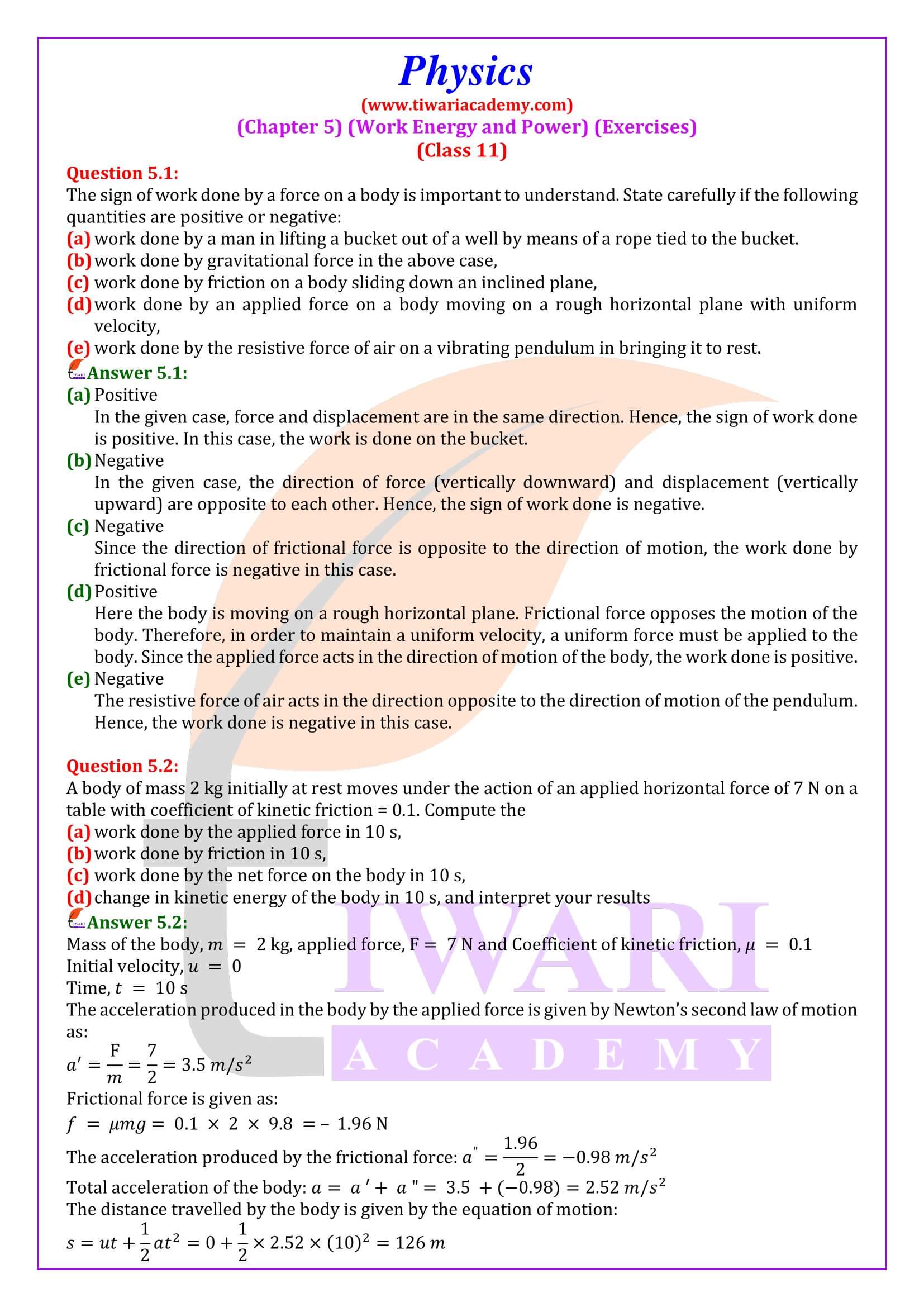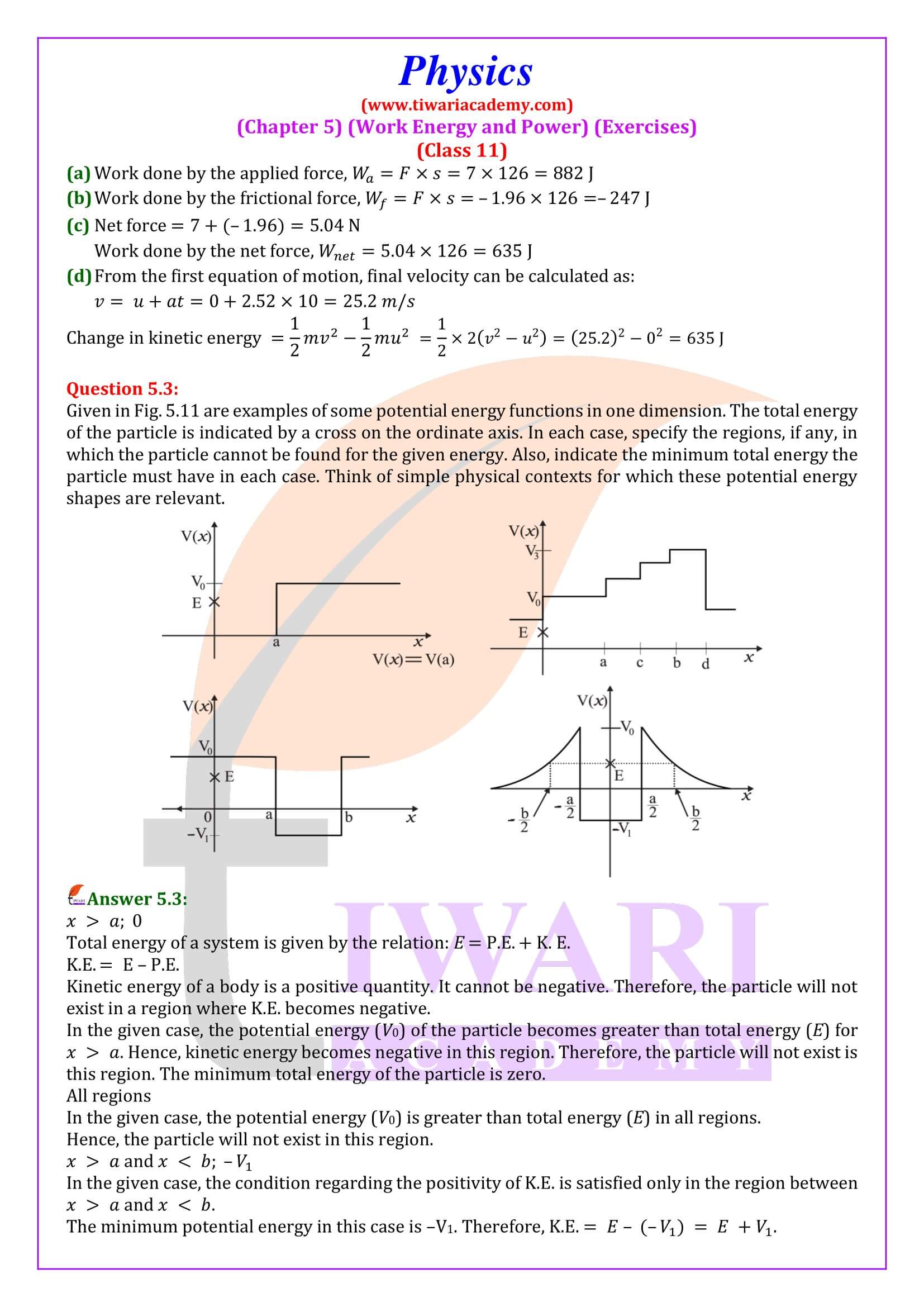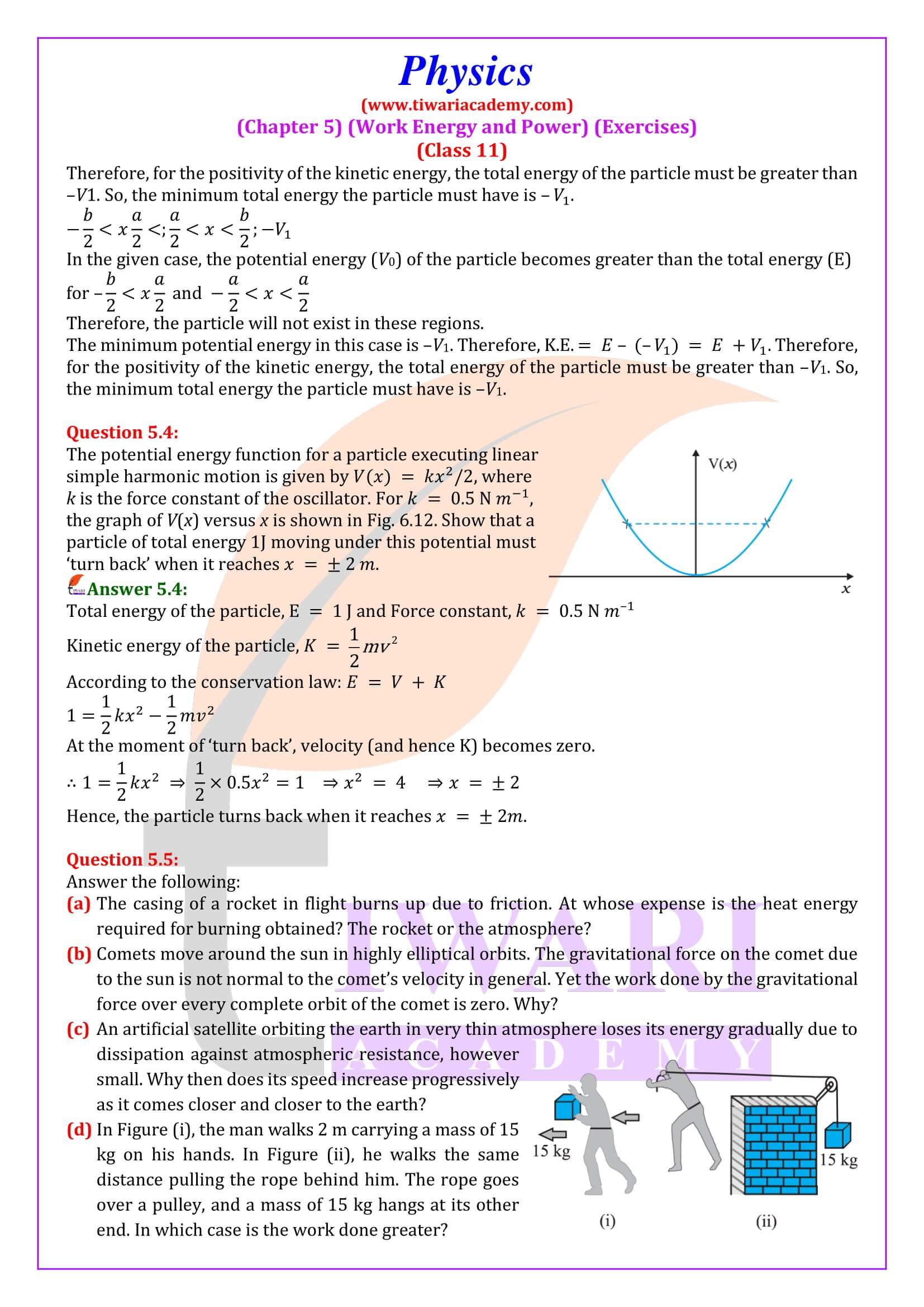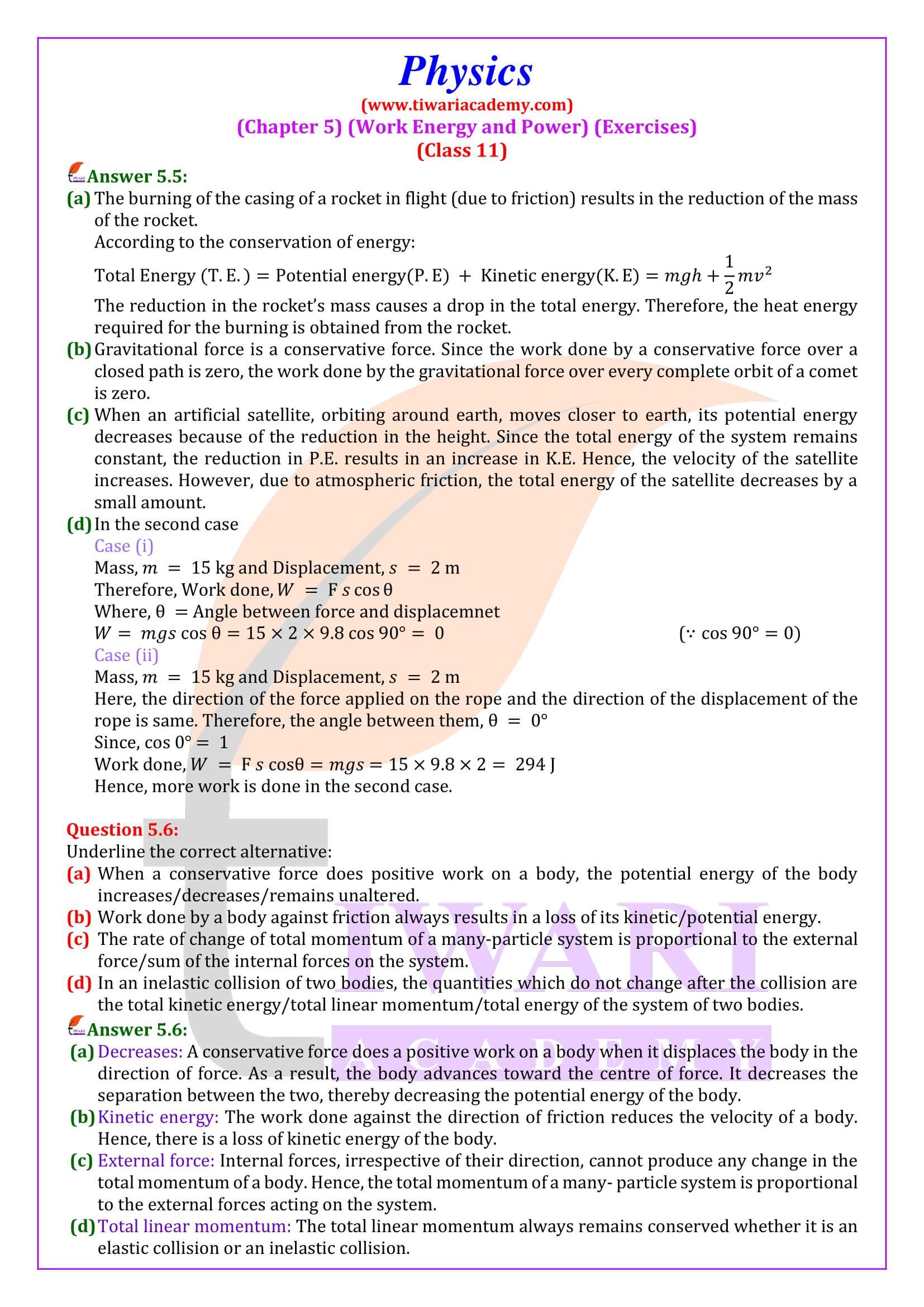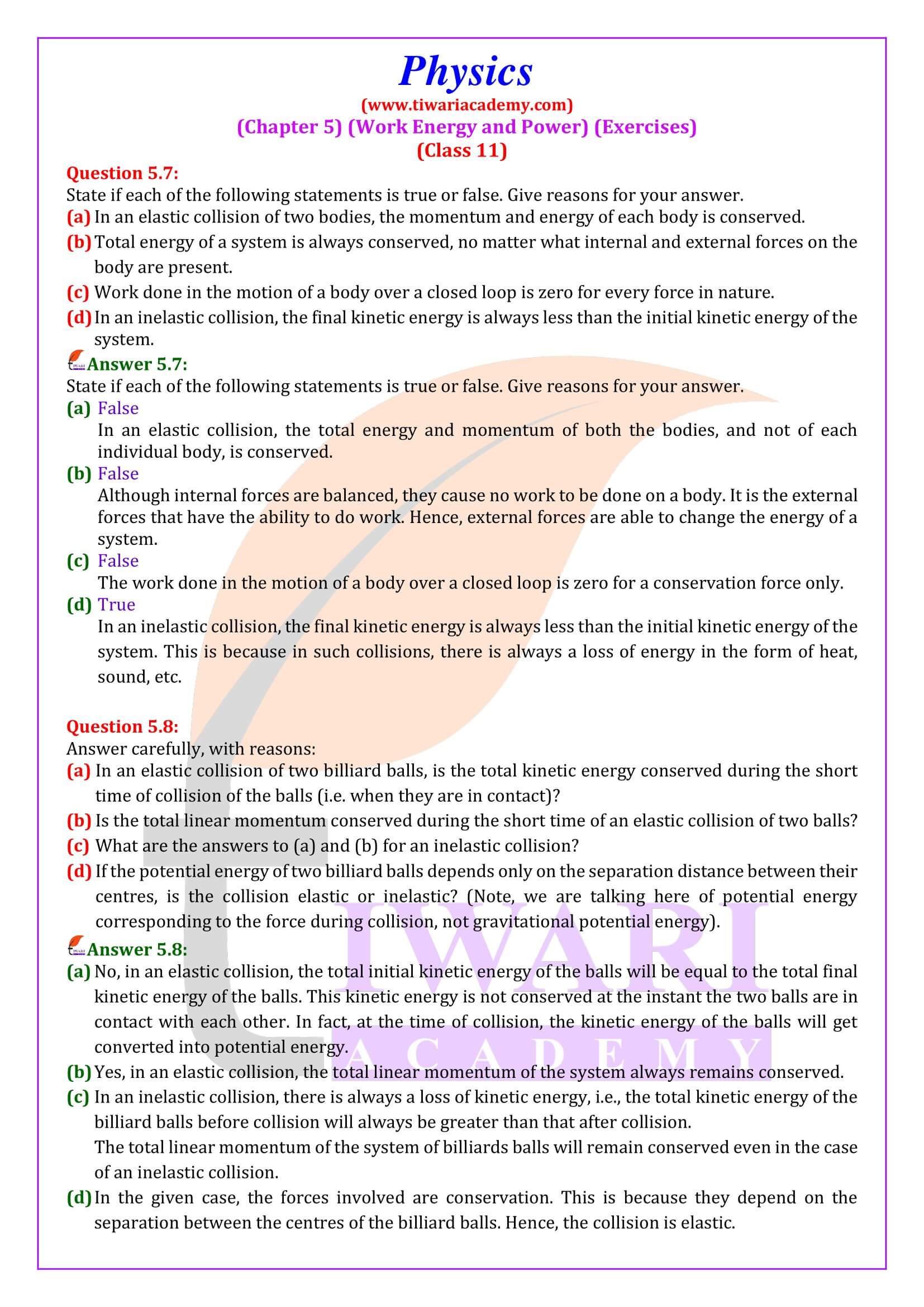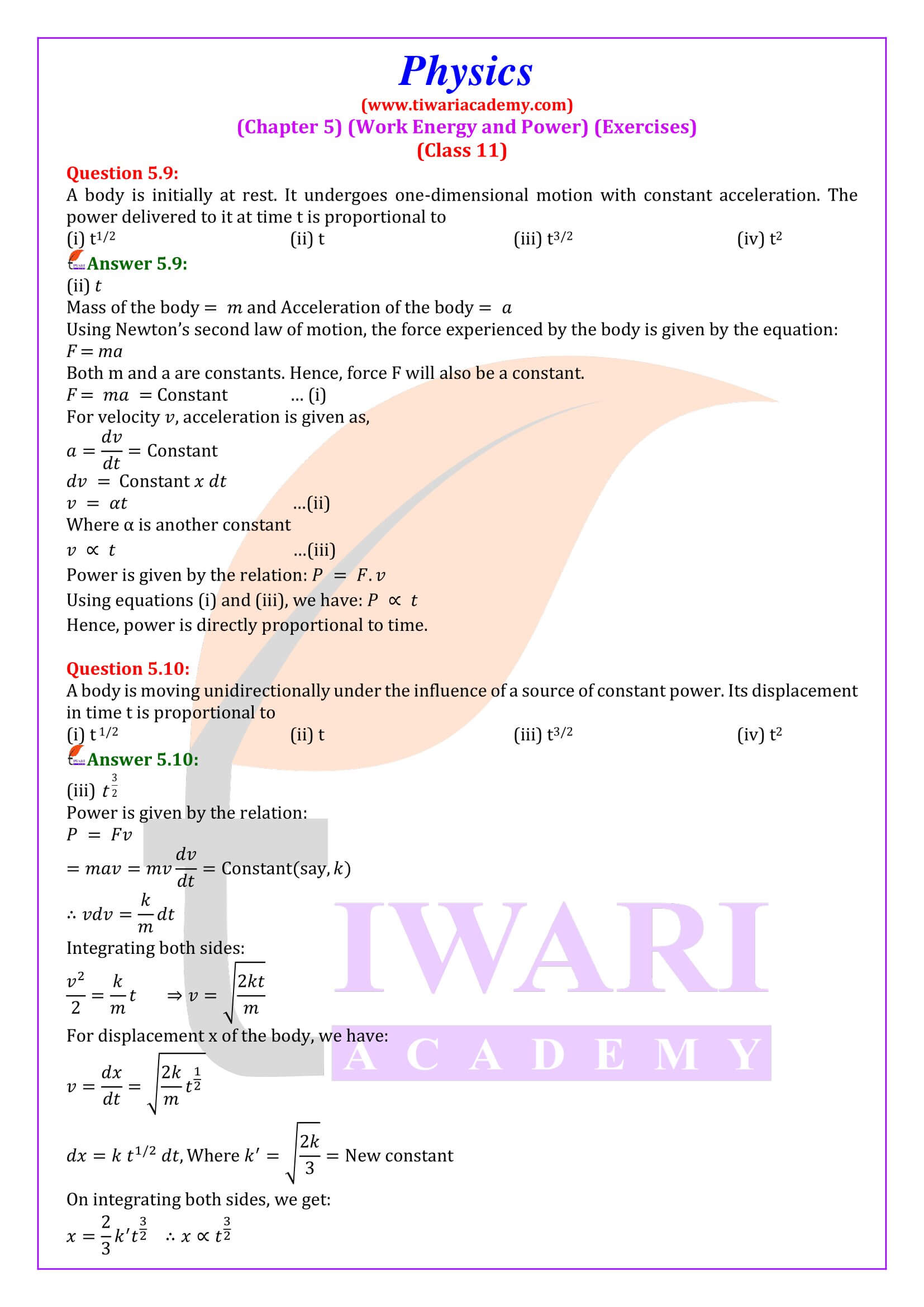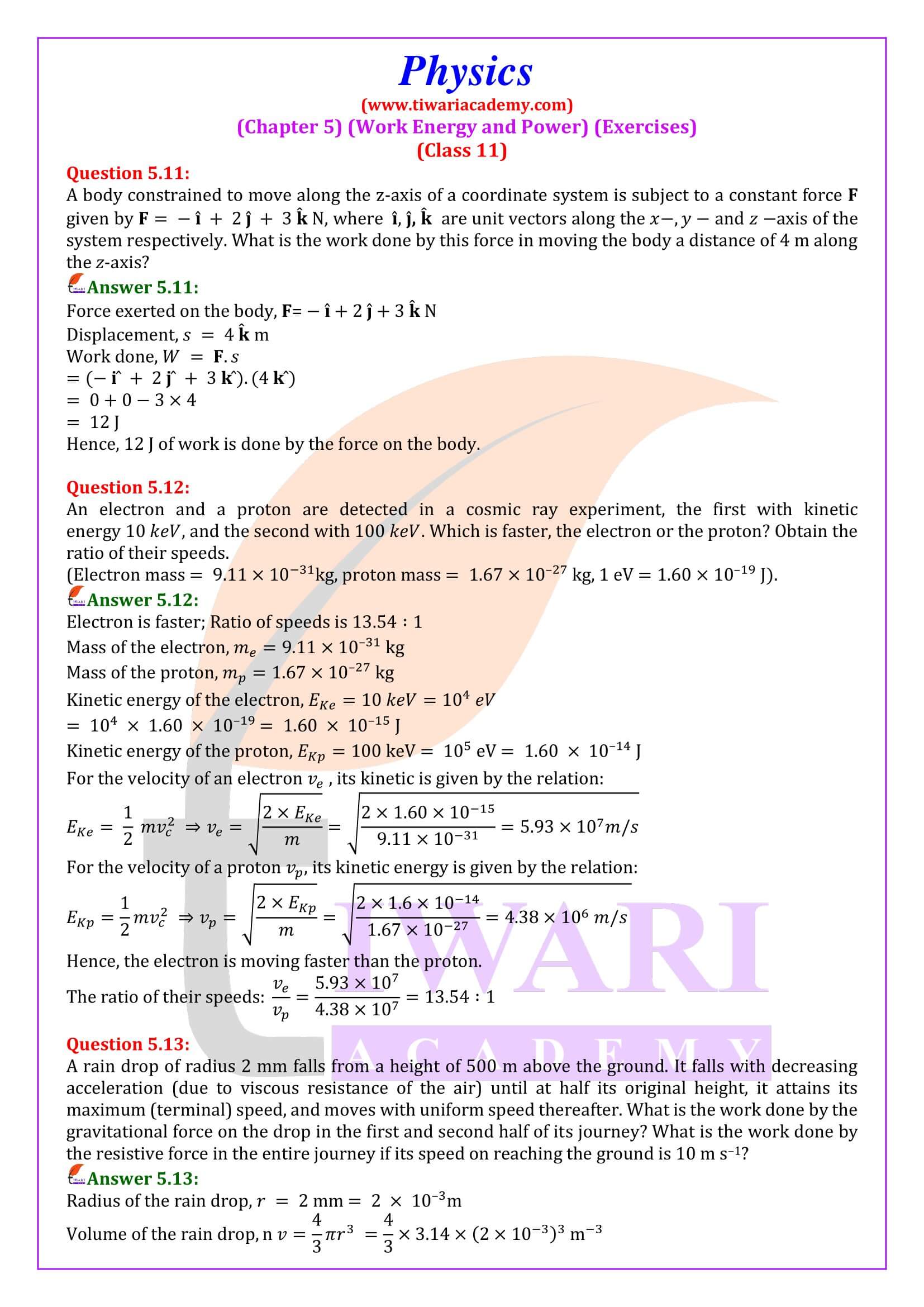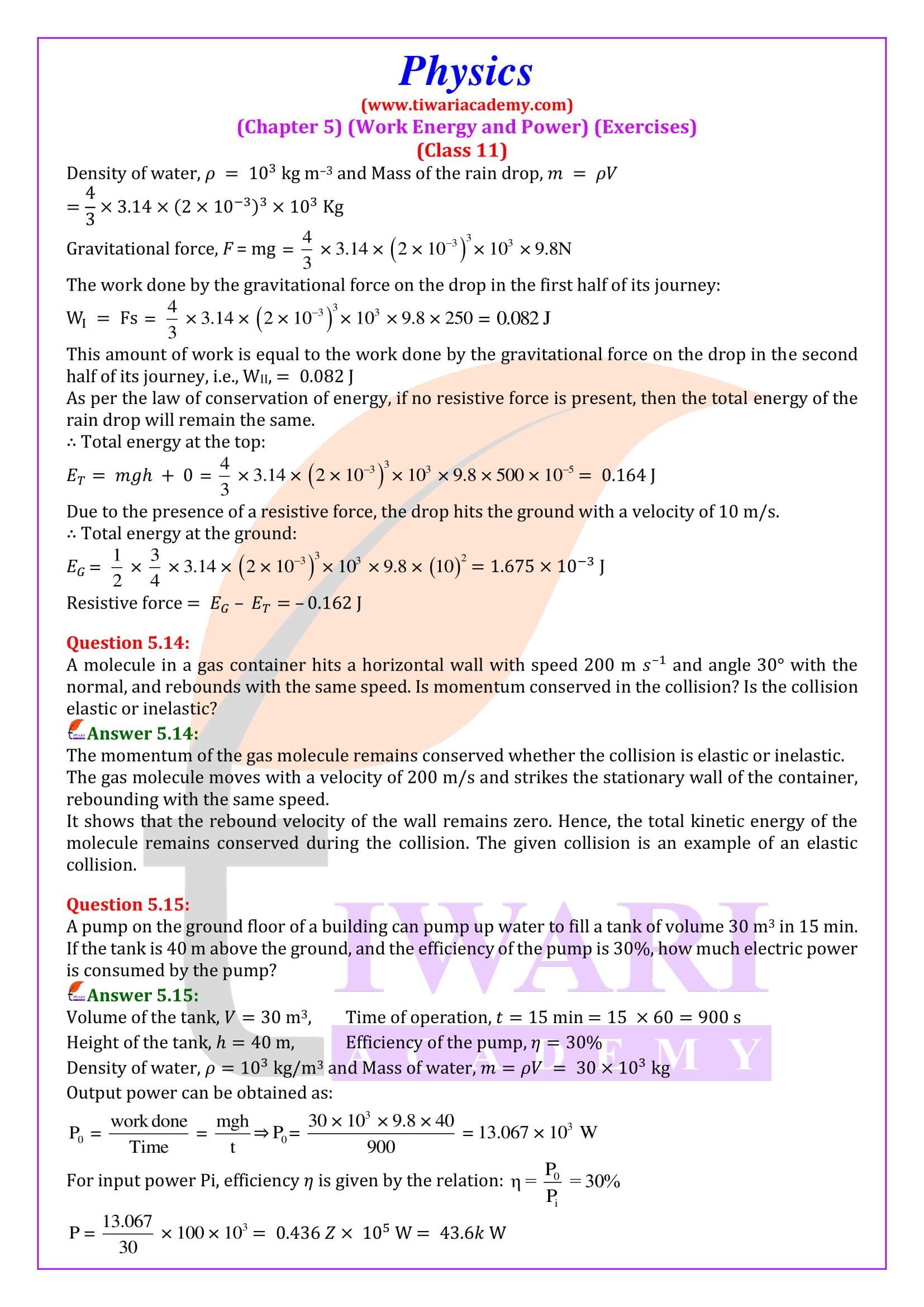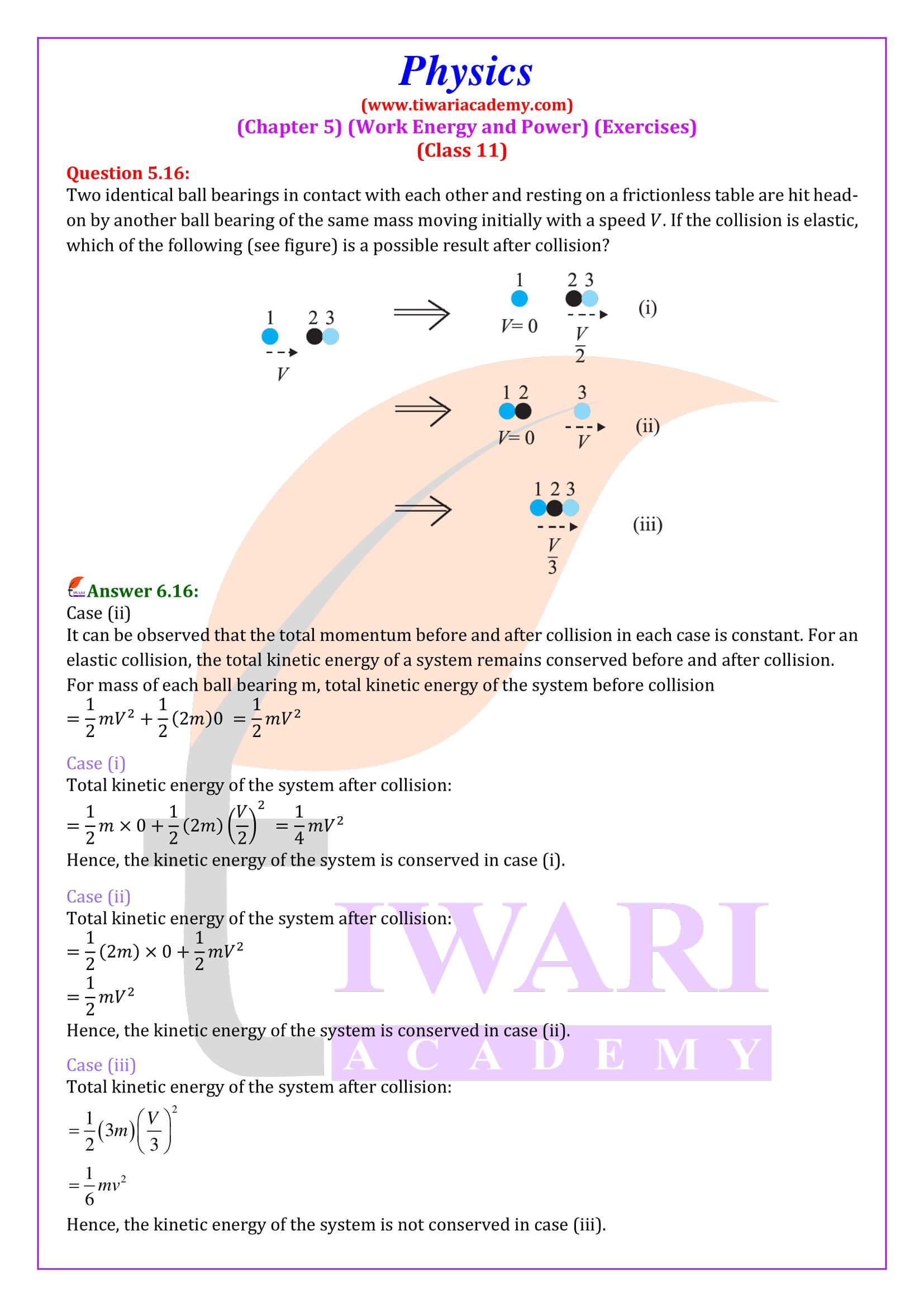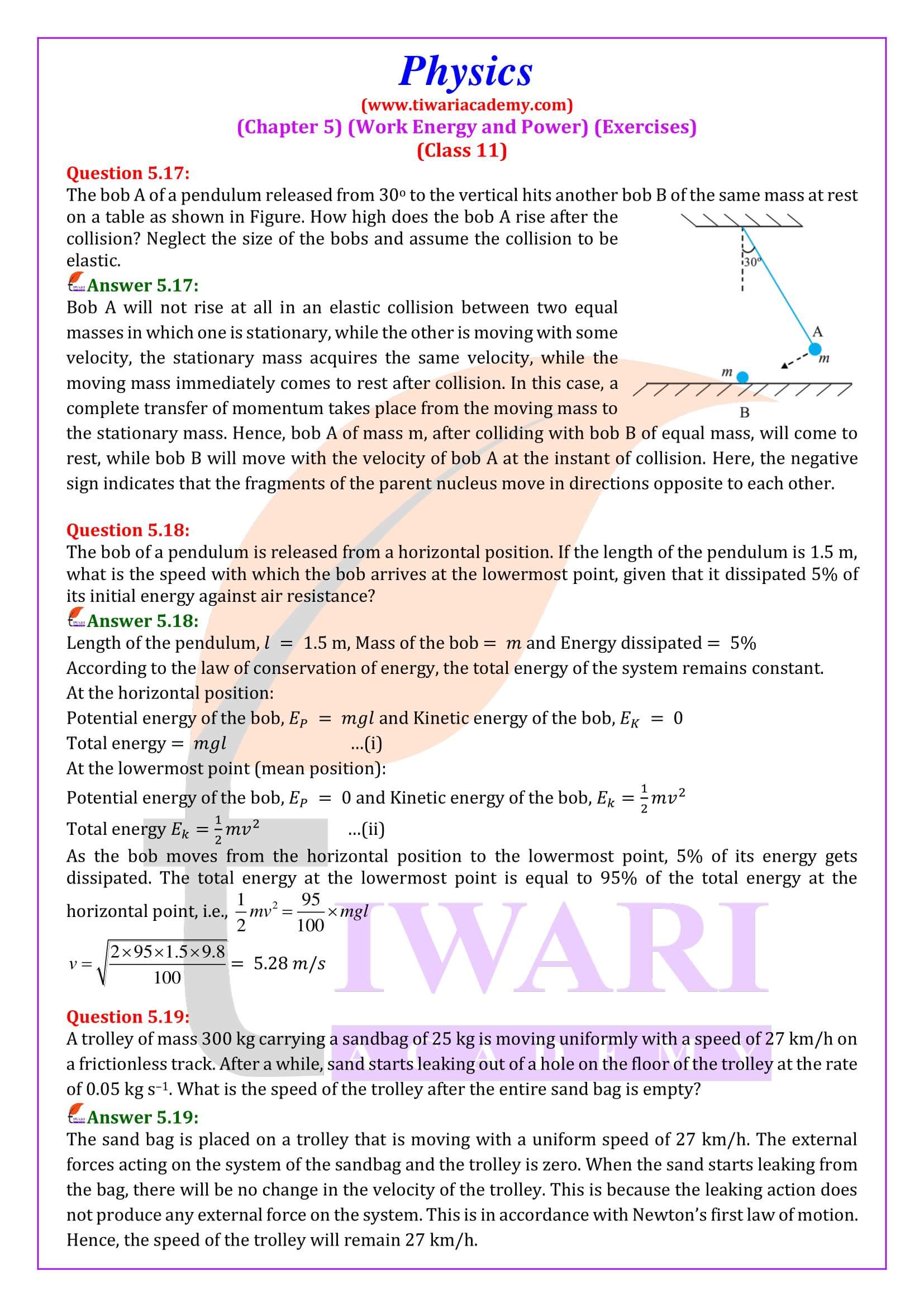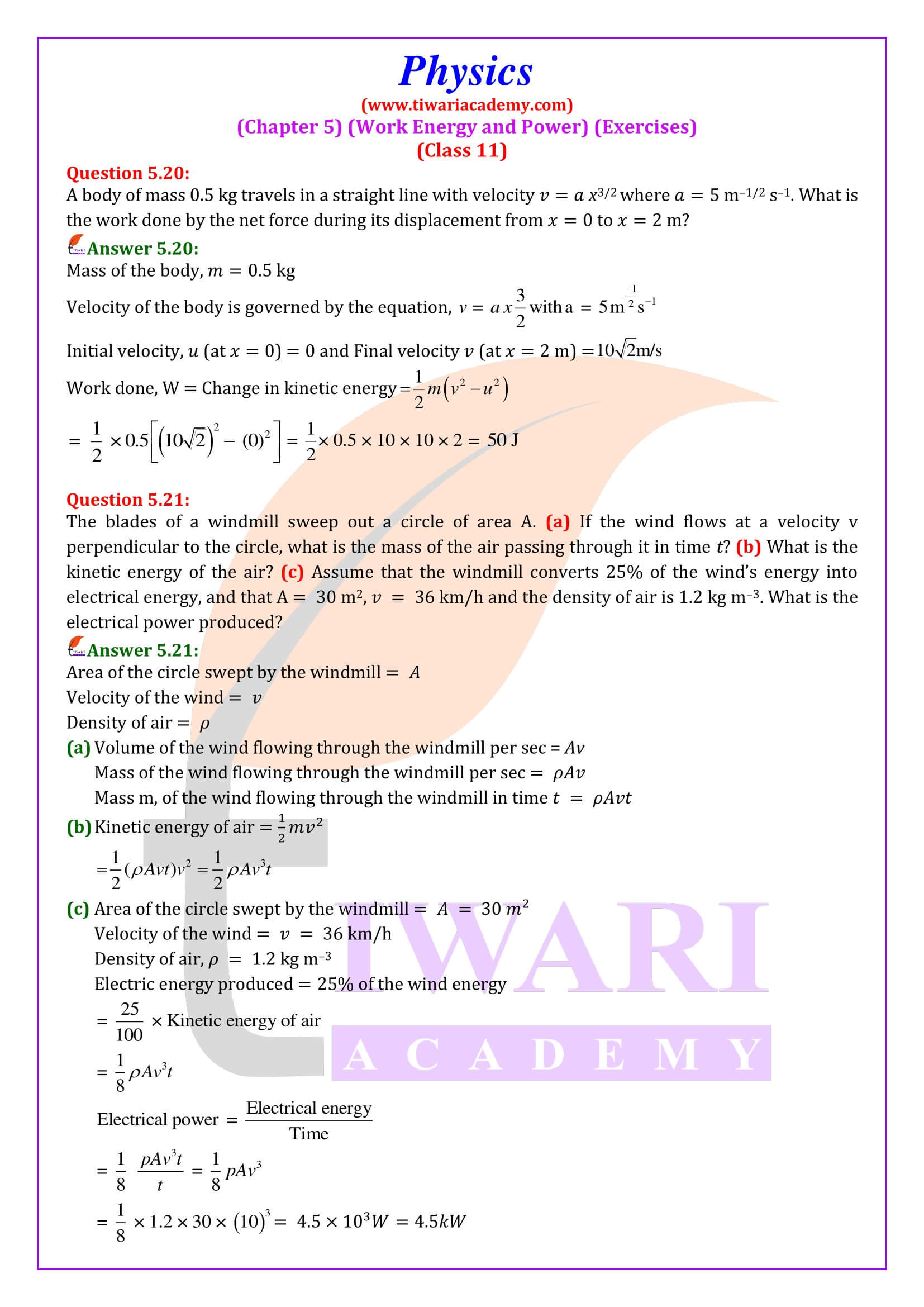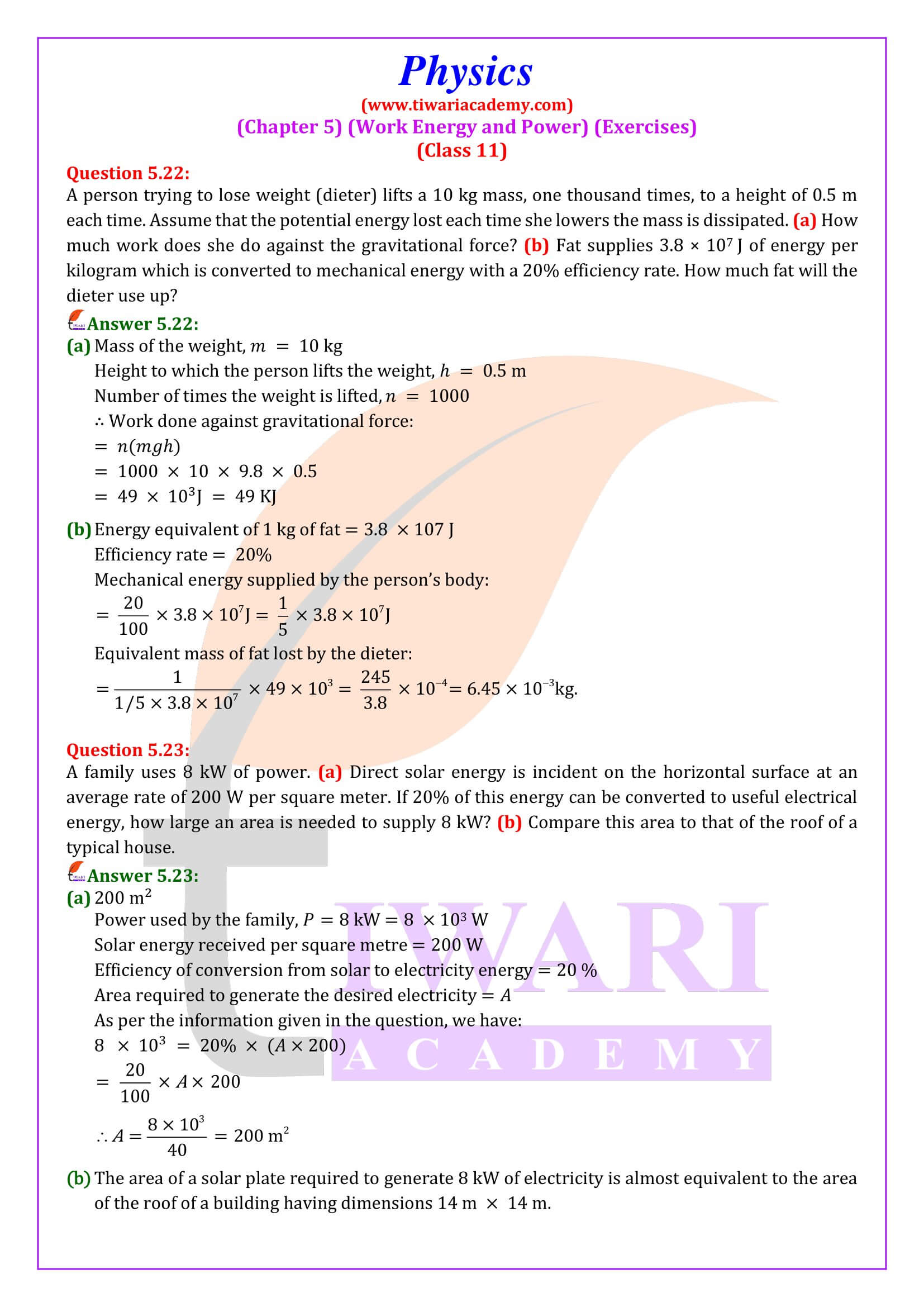NCERT Solutions for Class 11 Physics Chapter 5 Work, Energy and Power in Hindi and English Medium updated for CBSE and State board students for 2025-26 with MCQ answers. If you come across any concepts that are unclear, seek clarification from your teacher, classmates, or online resources at Tiwari Academy. It’s crucial to have a strong conceptual understanding before moving forward.
Class 11 Physics Chapter 5 Work, Energy and Power Question Answers
Class 11 Physics Chapter 5 MCQ
A ball moves in a friction less inclined table without slipping. What is the work done by the table surface on the ball is
Which one has higher kinetic energy? Both light and heavy bodies have equal momenta.
According to the Equivalence of Mass and Energy, it states that mass and energy are not inter convertible
The energy passed by the body by virtue of its motion is known as
Kinetic and Potential Energy
Potential energy is the energy stored by any object or system due to its position or the arrangement of its components. However, it is not affected by the environment outside the object or system, such as air or altitude. Potential energy is not transferable, it depends on the height or distance and mass of the object. K.E. can be transferred from one object to another via vibration or rotation. On the other hand, the kinetic energy of a moving object or particle system remains same. Unlike potential energy, the kinetic energy of an object is relative to other fixed and moving objects in its environment.
For example, if an object is placed at a higher height, the kinetic energy of the object will be higher. P.E. is converted into kinetic energy, kinetic energy is converted into potential energy, and then back again. It’s an endless cycle. Kinetic energy is created when potential energy is released, propelled by gravitational or elastic forces and other catalysts.
Kinetic energy is the energy of motion. When work is done on an object and it is accelerated, it increases the kinetic energy of the object. The most important factors in determining kinetic energy are the motion and mass of the object in question. Although mass is a universal measure, the motion of an object can occur in many different ways, including rotation around an axis, vibration, translation, or any combination of these and other motions.
Class 11 Physics Chapter 5 Multiple Choice Questions
Collision between marble balls is which type of collision
Which is the type of collision in which both the linear momentum and the kinetic energy of the system remain conserved
The rate of doing work is called
An electric heater of rating 1000W is used for 5 hrs per day for 20 days. What is the electrical energy utilized?
The law of Conservation of Energy
The law of conservation of energy states that energy cannot be created or destroyed – it can only be converted from one energy form to another. This means that a system always has the same amount of energy and there is no need to add it from the outside. This is especially confusing in the case of non-conservative forces, where the energy is converted from mechanical to thermal, but the total energy remains the same. The only way to use energy is to convert it from one to another.
The change in the internal energy of the system can also be determined by mathematical equations given in chapter 6 of 11th Physics NCERT. Although these equations are very powerful, they can make it difficult to see the power of statements. The take home message is that energy cannot be created from scratch. Society has to get its energy from somewhere, although there are many sneaky places to get energy from certain sources, primary fuels, and primary energy streams.
Collision
Collision, in physics, is the sudden and violent collision of two objects when they are in direct contact, such as two billiard balls, a golf club and a ball, a hammer and a nail head, or falling objects on the ground. In addition to material properties, two other factors can affect the outcome of an impact: the force with which objects come into contact and time.
A common rule of thumb is that a hard steel ball dropped on a steel plate will almost bounce where it fell, whereas with putty or lead it will not. The collision of a steel ball with a steel plate is called elasticity, and the collision of a putty or lead ball with a steel plate is called in-elasticity or plasticity.
Between these extremes there are varying degrees of elasticity and corresponding responses to impact. Perfect elastic shocks can only be achieved at the atomic level. The kinetic energy of the reacting body is not lost; in a fully plastic shock, kinetic energy is lost the most. An elastic collision is a collision in which there is no net loss of kinetic energy in the system due to the collision.
How many questions are there in the NCERT book of 11th Physics Chapter 5?
Earlier there were 30 questions in Chapter 5 of the NCERT Book Class 11 Physics Exercises but as per the new syllabus there are only 23 questions in 2025-26 curriculum. Moreover, the answers to all these 23 questions are available in Tiwari Academy’s NCERT solutions section. These answers are accumulated in a precise and logical way by expert teachers on India’s leading educational website.
How can the triple point of water be explained through Chapter 5 of Class 11 Physics?
The triple point of any substance is the combination of temperature and pressure at which a substance can exist in all three states – solid, liquid, and gas. Students of class 11 Physics can understand using the examples given in chapter 5. The triple point of water is 273.16 K and the vapor pressure is 611.66 Pascal’s. At this point, water can exist in three states through small changes in pressure and temperature: vapor, liquid, and ice.
How to download NCERT Solutions for Class 11 Physics Chapter 5?
NCERT Solutions for Class 11 Physics Chapter 5 Working Energy and Power is given on various educational websites free to download. Students can download NCERT Solutions for 11th Physics Chapter 5 from Tiwari Academy website also. You have to visit the page NCERT Solutions Class 11 Physics Chapter 5 and download it using the PDF file link. There are two separate file – one is for exercises solutions and other one is additional exercises question answers. These NCERT solutions can help students to prepare for exams and get good grades.
